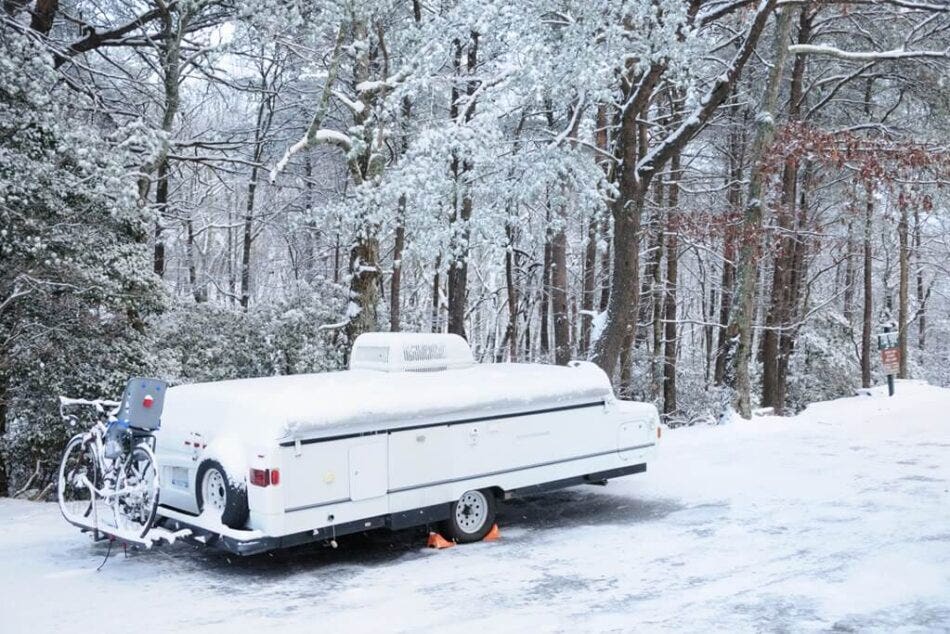Unless you’re a lucky Albertan who heads to warmer destinations for the winter, you’ll likely be parking your RV for the off-season. The cold weather, long nights and limited availability of campgrounds make winter camping unappealing for most. So, where is the best place to store your RV for winter? How can you protect your RV from the elements so that it’s ready to go in the spring?
Where to Store Your RV for Winter
The first step is figuring out exactly where to store your RV during the winter. This will mostly depend on your budget and the options available to you. Ideally, an RV would be garaged indoors to be fully protected from the elements and to deter theft – but this isn’t an option for most people.
The most common choices for winter storage are:
- On your own property
- At a friend or family member’s place
- At a campground (usually if you have purchased or rented a lot)
- At an RV storage facility
When choosing a place to store your RV for the winter consider cost, security, accessibility and the amount of protection from the elements.
Cost is an important factor for most people. RV storage can range from free to $100 per month (or more). Amenities and location are the biggest aspects when looking at prices. The size of your RV may also impact the cost of storage – the larger the RV, the more it will cost.
Unfortunately, RVs are popular targets for thieves. It’s important to choose a winter storage place that will be secure. Security features can include fencing, gates, locks or passcode entry, lighting, cameras and security guards. You can install your own additional security to your RV, but this can be expensive and less effective than secure storage.
You’ll also want to be aware of any local bylaws if you’re storing it on your own property or at a friend’s place. For example, many municipalities in Alberta do not allow you to park an RV on the street for longer than 48 hours at a time.
Wherever you plan to store your RV, you should consider the amount of protection your RV will have from the elements. If you’re storing it outside, this will be minimal, and you may have to take some extra steps to prepare your RV for winter storage.
Preparing your RV for Winter Storage
While in winter storage, your RV can be damaged by rodents, sun exposure, severe weather, burst pipes and thieves or vandals. Here’s a checklist of what to do before you put your RV into storage:
- Wash the exterior of the RV
- Clean the interior of the RV, including the fridge and any other appliances
- Remove all food and liquids
- Remove anything that would be a good nesting material for pests, or store in a sealed plastic container
- Inspect the RV, especially the roof and seals
- Repair any tears, cracks or openings
- Close and secure all windows, doors and vents (unless you have a vent cover)
- Close the window shades
- Winterize your RV’s plumbing (drain and add antifreeze)
Once your RV is ready for storage, you’ll want to do the following:
- Park on level ground, if possible
- Use jacks and blocks to raise the RV and preserve the tires, or move the RV once a month to rotate the tires
- Use tire covers to protect from sun exposure
- Put a wooden plank between the tires and the ground, if you’re not using jacks and blocks
- Use an RV cover or tarp to keep moisture out of the RV (you may need to shake it out periodically)
- Remove the battery (it shouldn’t freeze, and you want to keep it charged)
- Use a hitch lock for added protection
- Lock anything that can be locked
- Activate any alarms or additional security measures
We recommend checking on your RV at least once a month. It’s important to keep your RV insurance during the winter too, just in case it is damaged or stolen.

